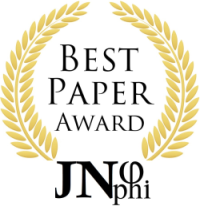The Myth of Consciousness: The Reality of Brain-Sign
Abstract
The physical sciences, as generally understood, are disciplines concerned with the characteristics and behavior of physical objects and states. What is evident about the current condition of consciousness is that: 1) It has no identified physical states; 2) There is no generally accepted vocabulary of its functioning, or its participant entities; and 3) No ‘normal science’ operative structure upon which a community of scientists agree (ref. T. Kuhn). The reasons are that consciousness is a prescientific concept persisting because there is no adequate physicalist theory to replace it, and because biology operates in a way ‘invisible’ to assumed mental processes and vocabulary. What is required is a plausible theory built on a biophysical base. A theory is being developed: it is termed the theory of brain-sign. Brain-sign replaces consciousness as an evolved neural operation in which brains communicate with each other in the collective action of organisms, so addressing the limitations of being an isolated individual. It depends upon neural signification (as brain-sign), in this case of the organisms’ immediate causal orientation towards the world. Thus, multiple organisms are linked as one biophysical operation. Signs are biologically ubiquitous and inherently physical. Organisms are not subjective agents with transcendent (quasi-divine) powers acting in a perceivable world, but evolved organic objects with the ability to cooperate as one overarching biological process. It is anticipated this theoretical operation and vocabulary will explain brain function, which mind fails to do. It accounts for science from both its neural origins and its communal nature.
Keywords:
brain function; brain-sign; collective action; consciousness; interneural communication; science per seDownloads
Metrics
References
Barrett LF. How Emotions are Made: The Secret Life of the Brain. Pan Books, 2017.
Brown R, Hakwan L, LeDoux J.E. Understanding the Higher-Order Approach to Consciousness. Trends in Cognitive Science 2019; 23(9):754-768.
Buccino G, Visani E, Sebastiano D, Duran D, Garofalo G, Maggliocco F, Silipo F. The Semantics of Natural Objects and Tools in the Brain: A Combined Behavioral and MEG Study. Brain Science 2022; 12(1): 97.
Buzsáki G. The Brain from Inside Out. Oxford University Press, 2019.
Chalmers DJ. The Conscious Mind: In Search of a Fundamental Theory. Oxford University Press, 1996.
Downloads
Published
How to Cite
Issue
Section
Categories
License
Copyright (c) 2022 Philip Clapson

This work is licensed under a Creative Commons Attribution-NonCommercial-ShareAlike 4.0 International License.
Authors continue to hold copyright with no restrictions.














